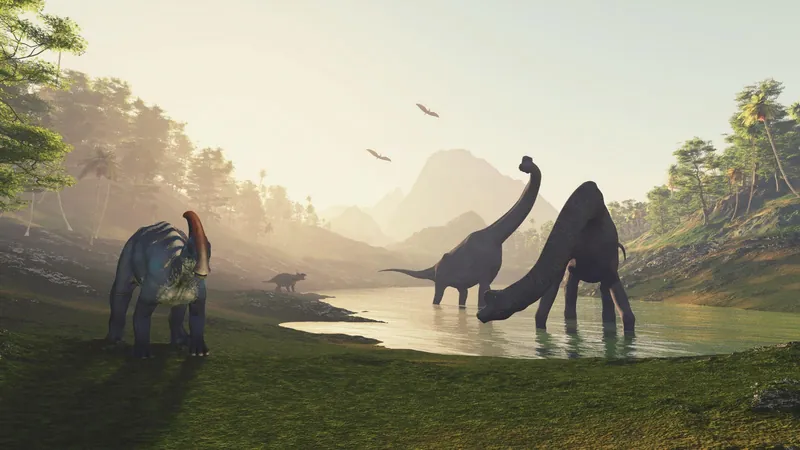
The Dinosaur Legacy: How Their Extinction Changed Earth's Landscape Forever
2025-09-21
Author: Noah
A Geological Transformation Triggered by Dinosaurs' Demise
Dinosaurs weren’t just massive creatures roaming the Earth; they were monumental forces that shaped our planet's landscapes. According to a groundbreaking study from the University of Michigan, the extinction of these prehistoric giants around 65 million years ago initiated drastic changes in Earth's geology, including the very shape of rivers.
Unveiling Sedimentary Secrets
For years, scientists observed significant differences in rock formations across the western United States from the Cretaceous to the Paleocene epochs, attributing these variations to sea level changes or other geological phenomena. However, paleontologist Luke Weaver and his team propose that the loss of dinosaurs led to a substantial shift in sedimentary structures.
Dinosaurs: The Original Ecosystem Engineers
Weaver suggests that dinosaurs acted as 'ecosystem engineers' similar to today’s elephants. These gigantic herbivores maintained open landscapes by controlling vegetation growth—giant sauropods would topple trees, while smaller herbivores grazed on underbrush. This prevented dense forests from taking hold, allowing for increased runoff and frequent flooding, resulting in extensive floodplains.
Flourishing Forests: A New Era Post-Dinosaurs
With dinosaurs extinct, forests began to thrive, fundamentally altering sediment transport. As vegetation stabilized the environment, rivers saw less sediment flow; instead of coarse sand and pebbles, finer materials like clay and organic debris accumulated in their place.
Evidence of an Asteroid Impact
The asteroid impact that marked the transition from the Cretaceous to the Paleocene epochs didn’t just extinguish the dinosaurs; it changed the entire geological record. The catastrophic event led to flooding and wildfires, leaving behind a distinct layer of glass, pulverized rocks, and soot—providing scientists with a clear timestamp of this historical shift.
Lessons for Our Time
This dramatic transition serves as a stark reminder of the potential consequences of current human-induced climate change. Weaver cautions that just like the K-Pg boundary marked a swift onset of geological change, today's alterations in biodiversity and environment may equally have lasting effects on Earth's landscape.
A Study Worth Exploring
The insights from this research, titled "Dinosaur extinction can explain continental facies shifts at the Cretaceous-Paleogene boundary," were published in the journal *Communications Earth & Environment*—a must-read for anyone interested in the lasting impact of these magnificent creatures.









 Brasil (PT)
Brasil (PT)
 Canada (EN)
Canada (EN)
 Chile (ES)
Chile (ES)
 Česko (CS)
Česko (CS)
 대한민국 (KO)
대한민국 (KO)
 España (ES)
España (ES)
 France (FR)
France (FR)
 Hong Kong (EN)
Hong Kong (EN)
 Italia (IT)
Italia (IT)
 日本 (JA)
日本 (JA)
 Magyarország (HU)
Magyarország (HU)
 Norge (NO)
Norge (NO)
 Polska (PL)
Polska (PL)
 Schweiz (DE)
Schweiz (DE)
 Singapore (EN)
Singapore (EN)
 Sverige (SV)
Sverige (SV)
 Suomi (FI)
Suomi (FI)
 Türkiye (TR)
Türkiye (TR)
 الإمارات العربية المتحدة (AR)
الإمارات العربية المتحدة (AR)